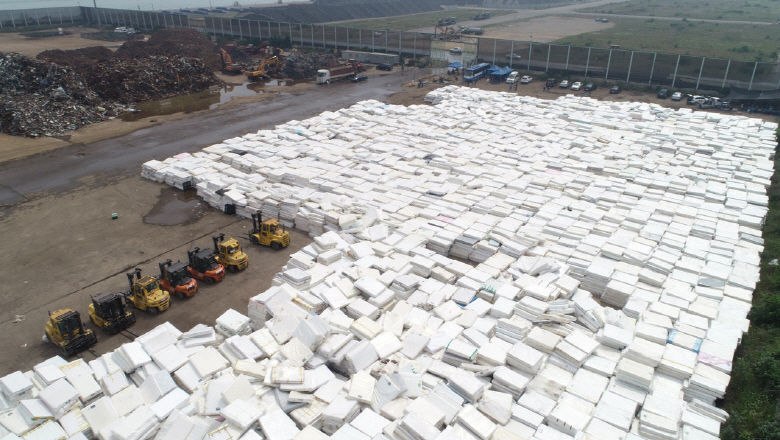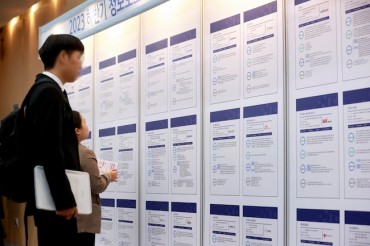
An open-air yard in Dangjin, 120 kilometers south of Seoul, is full of collected mattresses on June 17, 2018. The products sold by Daijin Bed Co. were recently found to release radon, a radioactive gas that can cause lung cancer. (image: Yonhap)
SEOUL, Jul. 13 (Korea Bizwire) — A new survey has revealed that approximately 80 percent of latex products typically purchased during overseas trips were found to emit radon, a carcinogenic agent.
Various civil groups held a press conference at the Central Government Complex in Seoul yesterday to announced the results of a survey performed on 709 people who were members of a community that had previously used radon-contaminated latex products.
According to the results of the survey, approximately 80 percent of the latex products used by respondents were suspected of radioactive contamination.
When radon is inhaled over a long period of time, experts say that it can lead to the development of lung cancer and stomach cancer.
Of the respondents, 23 percent said that they had used the latex products for less than a year, while 15 percent said the latex products were used for three years.
Another 14 percent of respondents had used latex products for four years, and 11 percent for five years. Thus, most of the respondents had purchased the products in the previous five years.
Respondents who had used latex products complained of thyroid-related illnesses, lung illness, respiratory sickness and skin diseases.
When asked about their opinion on future measures (multiple answers possible), 85 percent of respondents said an investigation by the government into radiation levels in latex products was necessary.
Other responses included refunds and returns (71 percent), investigation on the products’ effect on health (60 percent), legal compensation (56 percent), and ban on household products contaminated with radon (51 percent).
The activist groups said that most of the products in question were made of negative ion latex materials containing radon.
“Consumers bought the products believing promotional materials that stated negative ion latex products helped induce sleep and were good for blood circulation,” said the groups.
But the groups stated that victims of latex products are rising in number as negative ion latex materials were used to produce beds.
Consumers purchased the products relying on the government’s certification of the positive effect of negative ions.
The activist groups are calling for the government to take responsibility for the radon and latex crisis, and carry out surveys on the latex products’ effects on consumer health.
The groups also are asking that the government collect latex products, and ensure that latex is not used to produce daily household materials in the future.
H. S. Seo (hsseo@koreabizwire.com)







The article states – “According to the results of the survey, approximately 80 percent of the latex products used by respondents were contaminated with radiation.” What typee of radionuclide was detected? This article does not make sense from a scientific perspective. Radon is detectable in outdoor air. What is meant when it is stated it contains radon? Radon is a noble gas that is not “contained” very well. Is there a substance on the latex that is producing radon.
Thank you for your well-educated advise regarding this article.
As you mentioned, radon is detectable in outdoor air. In this respect, the original text was somewhat misleading. Your point has been well taken.
We correct the part at issue. Thank you for the comment.
I appreciate your article, it’s easy to understand and detailed, thank you for sharing.
Obviously this is related with some “special products” which has been equipped with “ions” ? (About the sense of such additions it maybe necessary to discuss seperately). It’s also not mentioned which kind of latex foam is effected. Is it SBR or natural?
A more detailed description of concerned products may help to prevent general – and unnecessary – fears of latex foam products !
This report sounds alarmist. Latex is found in several products- paint, adhesives, gloves, mattresses etc., I wish you would have reported what type of latex is involved in the study. Latex is found in natural as well as synthetic form and I understand the natural form has stood test of time and is harmless with respect to radon compared to synthetic latex which is typically styrene-butadiene with more chemical additives. Even here the study does not offer any logical explanation on the radon emission. Such limitation of the study ought to be included in reporting.